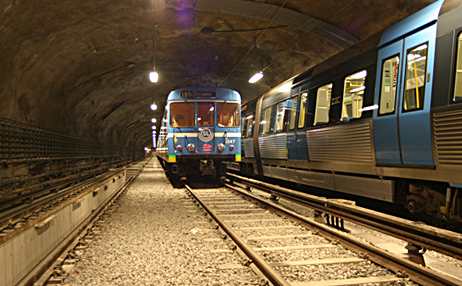About AB Transitio
AB Transitio’s history
The Swedish railways have been gradually reorganised since the end of the 1980s. Until that point the Swedish State Railways, SJ at the time, was the dominant player. For a long time, SJ had been responsible for ensuring that suitable vehicles were acquired for both regional and interregional train transport. Then an important step was taken in what would eventually become the deregulation of Swedish railways. From 1990, regional transport authorities were given the right to procure train transport within their own regions, which allowed the opening of the market to other operators than SJ. The central government simultaneously commenced a reorganisation and division of Swedish State Railways. Since 1988, responsibility for the infrastructure had already been under the remit of the then new Banverket (today’s Swedish Transport Administration), and the remaining components were incorporated in 2000/2001, including the establishment of today’s passenger transport operator, SJ. All in all these changes meant that the transport authorities were no longer able to satisfy the need for rail vehicles with the support of Swedish State Railways. The issue of how to acquire rail vehicles thus needed to be resolved differently. One option could have been to allow the procured train operators to supply rail vehicles. This would have required operating agreements with unreasonably long durations of contract, and this was not a favoured option for many reasons. Which is why the transport authorities chose to purchase and manage rail vehicles for themselves. To make this process as efficient as possible, the transport authorities decided to create a co-owned rolling stock company in 1999 – this was the start of AB Transitio. On 11 October 2012 AB Transitio's ownership structure was changed into its current form. Read more about the co-owners here: AB Transitio’s co-owners may also purchase and administrate their own rail vehicles.
Då togs också ett viktigt steg i vad som skulle komma att bli en avreglering av den svenska järnvägen. Med början 1990 fick de regionala trafikhuvudmännen rätten att upphandla tågtrafik inom sin respektive region, vilket innebar en möjlig marknadsöppning för andra operatörer än dåvarande SJ.
Samtidigt påbörjade staten en omorganisation av och uppdelning av Statens järnvägar. Ansvaret för infrastrukturen hade redan 1988 överförts till det då nyinrättade Banverket (numera Trafikverket) och resterande delar bolagiserades 2000/2001, då bl.a. nuvarande persontrafikoperatör SJ AB bildades. Sammantaget medförde dessa förändringar att trafikhuvudmännen inte längre kunde tillgodose behovet av spårfordon med stöd av Statens järnvägar. Frågan om anskaffning av spårfordon måste därför lösas på annat sätt.

Environmental policy